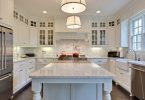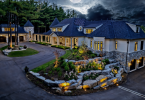 When I am invited to a client’s home, it is exciting for me because even the process of getting there can be inspirational. The trip I make to get there is one they take every day, I see the same sights, the natural beauty and possibly even the man-made eyesores they see along the route. Then, as I get closer, I enter the neighbourhood, and see the house’s surroundings and the way the yard is landscaped. The homeowners have chosen this location. It may be a mystery to me until I have an opportunity to meet the people with whom I will be working.
When I am invited to a client’s home, it is exciting for me because even the process of getting there can be inspirational. The trip I make to get there is one they take every day, I see the same sights, the natural beauty and possibly even the man-made eyesores they see along the route. Then, as I get closer, I enter the neighbourhood, and see the house’s surroundings and the way the yard is landscaped. The homeowners have chosen this location. It may be a mystery to me until I have an opportunity to meet the people with whom I will be working.
Once I am in the house, I let the structure of the building, the line of the architecture and the internal finishing details tell me how it would like to be finished, to create a symbiosis between walls, doors, windows, crown mouldings and floor coverings with the finishes we will offer to the space. The final, but probably the most important element is the people who will occupy the house. They are the element that will transform the space into a home. As Dorothy, in “The Wizard of Oz” says at the end of the film, “There’s no place like home.” The definition of that word is as individual as a fingerprint.
My desire to understand what makes “your life work” is basic to what the room will become. It starts with my client. Some people want their home to be a sanctuary of calm and gentle flow, while others want a space that is stimulating, filled with active energy. Both are equally valid, as they ultimately provide the homeowners with a sense of being settled and of enjoying their own space.
I believe the notion that form follows function. As the homeowners speak about the way the room is to be used, I start to imagine the elements of the space that are non-negotiable. Will the focus of the room be the television, or will it be used for conversation with guests? Will this be a child’s play area or will it be used to display some inherited treasures? Answering those questions gives us the ideas we need to plan for traffic flow and helps us know which elements will fit into the dimensions of the room we are working on.
The room is finished according to the clients’ idea of home, using accessories that fit their style. Does that mean using very modern elements, or will the space be filled in completely traditional style? There can even be a fusion of the two, where the furniture is traditional but the accessories are very modern. Generally, the room takes shape and develops “feeling” through colour and accessories. Think how you might feel in a striped red room, decorated with images of clowns and rubber balls, as opposed to one painted in soft grey, accessorized with chrome orbs and black and white photography of architectural details. To be sure, different styles evoke different feelings. What a designer strives to do is to determine what best suits the clients so that they will love their space every time they use it.
Text by Glen Peloso
Photo by Chris Gallow
Latest posts by Glen Peloso (see all)
- Glen’s Kitchen Must-Haves - July 13, 2025
- 2023 Trends with Designer Glen Peloso - July 13, 2025
- Bathroom Design Tips - July 13, 2025






